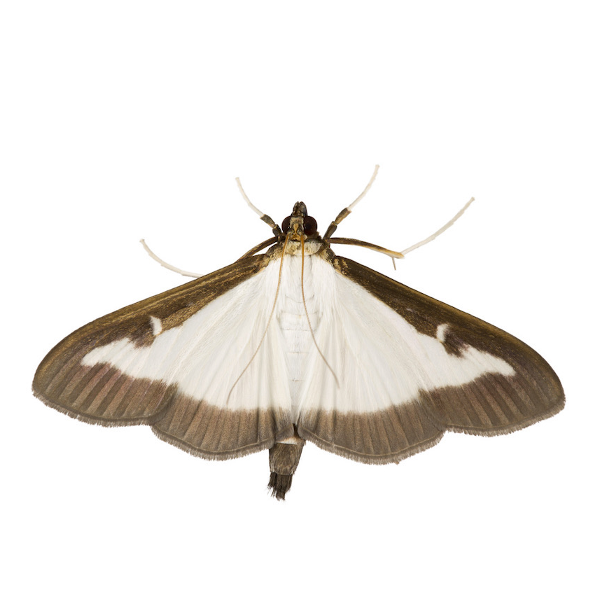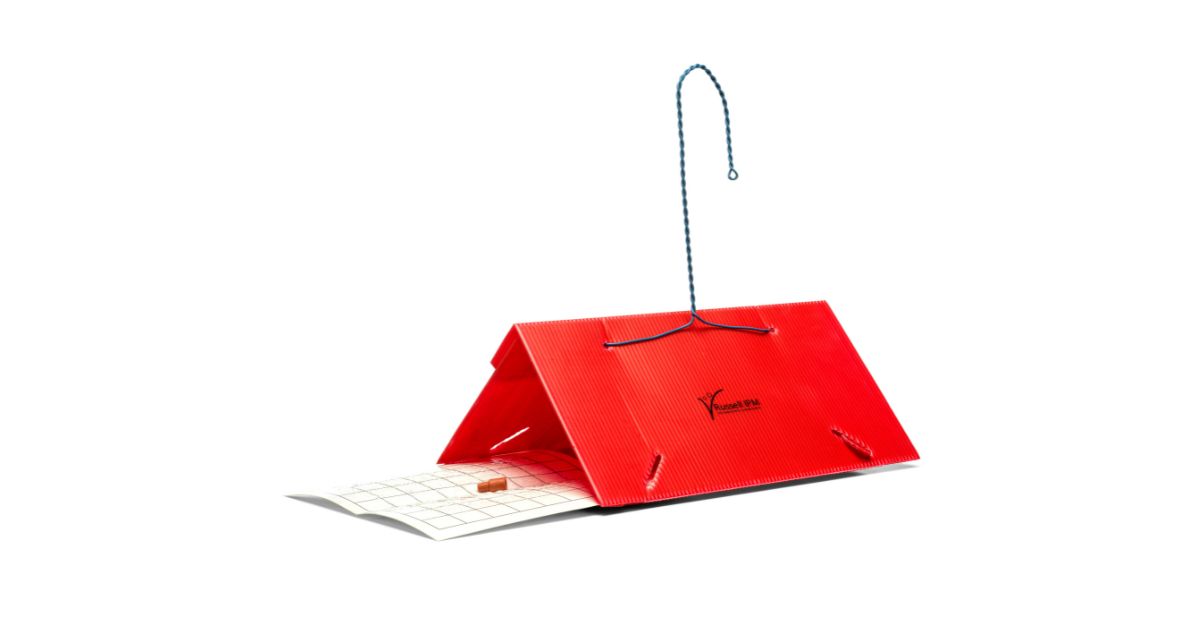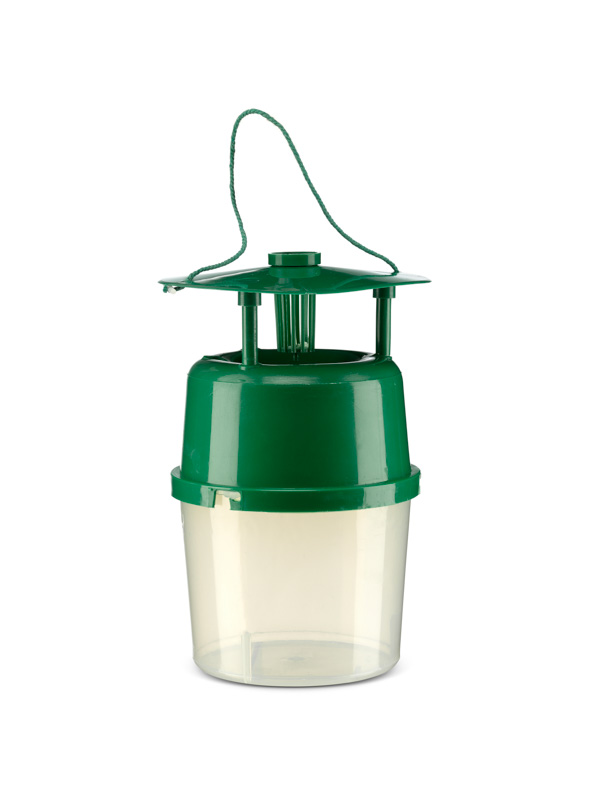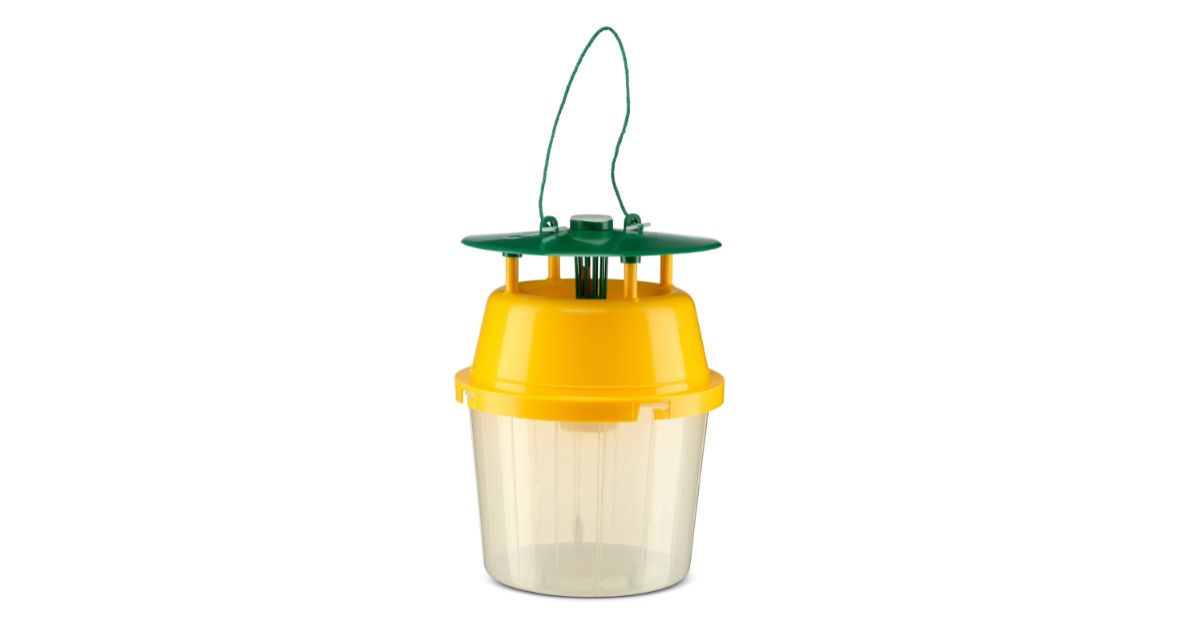Biology
Adult: Adult wingspans can reach 40mm. These moths have two distinct patterns: either white forewings with a thick brown band along the outer edge and a white spot in the upper middle of the wing, or a fully brown forewing with the same white spot. Adults live for about two weeks and travel up to 10km annually.
Eggs: Eggs are laid in clusters of 5-20 in a gelatinous mass on the leaves of box tree.
Larvae: The caterpillars feed on the leaves, but may also attack the tree bark leading to the tree drying out and dying. They also form protective webbing which makes them difficult to control. Larva have 5 to 7 stages, depending on temperature. Hatched larva can spread up to 20cm along the tree before pupating. Larvae are green with black heads, and have black spots surrounded by white along their segments. All larvae also have black stripes along their sides, which become more noticeable in later instar stages. Larvae can reach 40mm in length when mature. Mature larvae enter a six to eight week winter diapause.
Pupae: Pupae are green with brown longitudinal lines when newly formed, gradually turning brown by the end of pupation.
Nature of Damage
Caterpillars cause damage to the flesh of leaves and leave webbing in the foliage. In more serious cases, they may fully skeletise leaves causing dieback and defoliation and even tree death.
Monitoring
The late instar caterpillars form protective webbing tents to feed in, so early intervention provides the best control.
Early detection of this damaging pest is provided by the Russell IPM’s pheromone lure and trap. Place the traps when adults are active, from April to October.
Act early to prevent an outbreak






